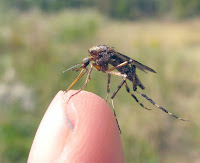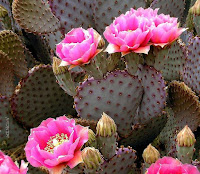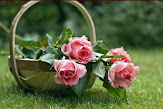 This Covid-19 spring has seen a huge surge in the number of people planting gardens. It seems that being stuck at home during planting season has been inspirational for many, while others are suddenly interested in where their food comes from. With so many rookies dipping their toes in the gardening pool, there are bound to be some garden failures and the ensuing loss of interest. If you are one of these struggling gardeners, don’t despair; most gardening flubs come from a few common mistakes that can be avoided or fixed.
This Covid-19 spring has seen a huge surge in the number of people planting gardens. It seems that being stuck at home during planting season has been inspirational for many, while others are suddenly interested in where their food comes from. With so many rookies dipping their toes in the gardening pool, there are bound to be some garden failures and the ensuing loss of interest. If you are one of these struggling gardeners, don’t despair; most gardening flubs come from a few common mistakes that can be avoided or fixed.If you haven’t planted yet and are getting ready to do so, you can avoid future problems before you begin digging. If you haven't planted a garden yet and wonder if it is too early/late, here is a handy tool for determining when is best in your planting zone (where you live). For more information on planting zones, this article is helpful.
 |
| US Planting Zones |
Soil – Back in February I wrote two blogs on preparing your soil to plant; one is about feeding your soil before planting and the other is about soil pH. The important take away from both of these is that you should know what kind of soil you have and enrich it before planning your garden.

Where You’re Planting – Most people don’t think about where the sun lands in their yard until they are forced to move their lawn chair from place to place during a barbecue. But any plants you plant will notice where the sun is right away. Full sun, partial shade and full shade are critically important distinctions that you need to determine before you decide what to grow. Luckily, this article painlessly walks you through this process.
 Pests – Insect and soil-dwelling pests can put the kibosh on your garden dreams. But not all common pests are all that common everywhere. A beetle may be more of a problem where you live than an aphid, although both are considered common pests. Do some online research, visit a local nursery, or contact your county extension office (find yours here) to see what you're up against so that you can prepare and/or plant accordingly. Don’t forget to protect against warm-blooded pests as well. Just because you don’t see them doesn’t mean they aren’t there. Birds, deer, rabbits, and squirrels can quickly appear and devastate a garden just when you are ready to enjoy it, while moles and voles will be out of sight underground as they feast on roots (check out our selection of excellent animal control products here). And then there is the family dog – no matter how much you love them, they can and will destroy what you’ve built. Here are some ways to dog-proof the area.
Pests – Insect and soil-dwelling pests can put the kibosh on your garden dreams. But not all common pests are all that common everywhere. A beetle may be more of a problem where you live than an aphid, although both are considered common pests. Do some online research, visit a local nursery, or contact your county extension office (find yours here) to see what you're up against so that you can prepare and/or plant accordingly. Don’t forget to protect against warm-blooded pests as well. Just because you don’t see them doesn’t mean they aren’t there. Birds, deer, rabbits, and squirrels can quickly appear and devastate a garden just when you are ready to enjoy it, while moles and voles will be out of sight underground as they feast on roots (check out our selection of excellent animal control products here). And then there is the family dog – no matter how much you love them, they can and will destroy what you’ve built. Here are some ways to dog-proof the area. Planning – Having a great plan is the key to success in many things, and gardening is no exception. It is in this step of garden building that you can avoid some common gardening concerns before they even start. First of all, bring all your ambitions down a notch. Instead of tilling up a whole quarter-acre, why not just a small plot by the back door to begin with? Gardens are physically taxing and time-consuming, usually more so than an inexperienced gardener expects. Start small and expand gradually to avoid that overwhelmed feeling that takes the fun out of the experience. Another way to encourage success is to only plant what you like. While this seems logical, a surprising number of people don’t follow this simple rule. If you are doing a vegetable garden, don’t plant what your family won’t eat and appreciate. If you are doing an ornamental garden, don’t plant a high maintenance, slow-growing plant; try one that is quick and beautiful instead. Your commitment to the project should be rewarded by something you like, otherwise, your interest will wane.
Planning – Having a great plan is the key to success in many things, and gardening is no exception. It is in this step of garden building that you can avoid some common gardening concerns before they even start. First of all, bring all your ambitions down a notch. Instead of tilling up a whole quarter-acre, why not just a small plot by the back door to begin with? Gardens are physically taxing and time-consuming, usually more so than an inexperienced gardener expects. Start small and expand gradually to avoid that overwhelmed feeling that takes the fun out of the experience. Another way to encourage success is to only plant what you like. While this seems logical, a surprising number of people don’t follow this simple rule. If you are doing a vegetable garden, don’t plant what your family won’t eat and appreciate. If you are doing an ornamental garden, don’t plant a high maintenance, slow-growing plant; try one that is quick and beautiful instead. Your commitment to the project should be rewarded by something you like, otherwise, your interest will wane.Now that you are ready to get your hands dirty, here are some pointers for laying down the proper foundation for a successful garden:
Dig Wide & Deep - Plants need loose soil around them for air and water to move around and for roots to grow, so make sure you put them in a hole that is plenty big enough. This article says the hole should be twice as wide and twice as deep as the pot the plant came in. It is hard for a plant to come back from a too-small hole (unless you dig them up and transplant them), so it’s best to go big here.
Spacing – This is important as an extension of the previous point, but it also touches on the look you’re going for in a garden and the growing practices of various plants in a vegetable garden. If you want a lush flowerbed, plant those babies close together. Do the opposite if you are planting perennials that take years to fully mature. If you are planting vining plants with bush plants, consider what might grow over the other. Additionally, consider how you will access your plants once they start to produce for you. All in all, carefully consider where growth will take each plant.
Mulch, Mulch, Mulch – This important step is, unfortunately, often overlooked. No matter what type of garden you are planting, mulch is almost magical in its ability to hold moisture and soil in your garden. It is also very ornamental these days and comes in a huge variety of manmade and natural materials. Not sure what to use? This article should help.
 Money Problems – Many people choose to start a garden as a way to relax and, perhaps, save a little money at the grocery store. And then the garden becomes a demanding money pit – not relaxing at all. Don’t go out and buy all sorts of gadgets and fancy gear. All you need are a handful of tools (see this article for the 5 basic and 5 nice-to-have items) and some old clothes that you don’t mind getting dirty and sweaty. Plants and seeds can get pricey if you go straight to the big-box store, so get creative with other ways to acquire them (again, your cooperative extension may be helpful), this article has some excellent ideas.
Money Problems – Many people choose to start a garden as a way to relax and, perhaps, save a little money at the grocery store. And then the garden becomes a demanding money pit – not relaxing at all. Don’t go out and buy all sorts of gadgets and fancy gear. All you need are a handful of tools (see this article for the 5 basic and 5 nice-to-have items) and some old clothes that you don’t mind getting dirty and sweaty. Plants and seeds can get pricey if you go straight to the big-box store, so get creative with other ways to acquire them (again, your cooperative extension may be helpful), this article has some excellent ideas. If you have already planted, some of the things that could go wrong may already be in place. This does not mean that you can’t take steps to mitigate the situation, even if it means moving plants or even scrapping the whole thing and starting over. Here is a video that shows how to revive sick and dying plants.
If you have already planted, some of the things that could go wrong may already be in place. This does not mean that you can’t take steps to mitigate the situation, even if it means moving plants or even scrapping the whole thing and starting over. Here is a video that shows how to revive sick and dying plants. Whether you planted a while back or are just getting started, if you want a happy, healthy garden there are two things to practice regularly and properly throughout the growing season: weeding and watering. Weed whether you want to or not; weeding is like doing the dishes, the longer you put it off the worse it gets. Everyone
Whether you planted a while back or are just getting started, if you want a happy, healthy garden there are two things to practice regularly and properly throughout the growing season: weeding and watering. Weed whether you want to or not; weeding is like doing the dishes, the longer you put it off the worse it gets. Everyone knows that watering is essential, but how your water is at the heart of a great garden. Frequent, shallow watering does not get the job done and leads to uneven watering. Slow, deep, and less frequent watering is the better method. However, as with everything else, what you are growing and where you are growing should have a huge impact on your watering practices.
Happy Gardening! Submitted by Pam






























